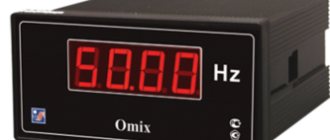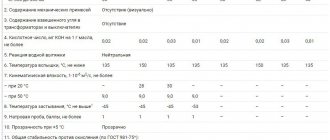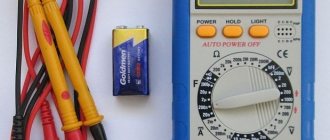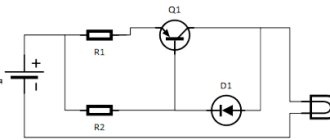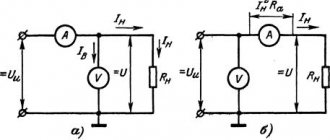A continuous electrical circuit that forms a connection between an electrical installation and a grounded object is called a metal connection. When installing new equipment, changing components or carrying out repair work, it is necessary to ensure testing of the quality of grounding of electrical devices. According to safety standards, metal communication checks are carried out by qualified electrical laboratory specialists.
Tekhnoprom-Zamer employees will take the necessary measurements using modern equipment. If problematic contacts are detected, the instrument readings are recorded in the protocol.
Why measure metal bonds?
Over time, the contact resistance at the junction of the elements increases. The reason is a decrease in the adhesion density of the surfaces of two conductors, which is caused by metal oxidation, destruction of fasteners, regular load or an error made at the installation stage.
This impairs the passage of current through the circuit and leads to disruption of the metal bond. As a result, the permissible potential difference between two links of the electrical circuit is exceeded, which creates a threat to human safety (the occurrence of dangerous voltage on the electrical installation body) and increases the likelihood of equipment failure.
Carrying out metal bond measurements will allow you to identify an emerging problem at an early stage and prevent serious consequences. During the research, the specialist will identify possible causes of the malfunction:
- Violation of the integrity of conductive elements and structures;
- Failures in the potential equalization system;
- Destruction of the insulating coating of the wiring;
- The presence of voltage on the body of the electrical installation due to a break in the grounding conductor.
The main purpose of the study is to check the parameters of grounding circuits that can identify current problems or discrepancies with safety standards.
What is metal bonding and how is it checked?
The use of the term “metal bond” in electrical engineering is associated with the need for a qualitative assessment of the reliability of contact between individual elements forming grounding. A decrease in this indicator (lack of good metal communication), as a rule, is explained by errors made during the installation of the system. Such defects lead to gradual oxidation of the metal in the contact zone and an increase in the contact resistance in this place. As a result of such violations, the system ceases to correspond to its intended purpose (that is, it does not provide protection against electric shock).
Testing metal connections will protect people and save energy
If you ignore regular checks, the contacts of the grounding network (with the exception of sealed connections) will oxidize and collapse under the influence of environmental factors. This leaves two disconnected circuit links with different electrical potentials. If a person touches them, he will act as a conductor, passing current through his body from one part to another, which will cause injury or lead to death.
Voltage of any magnitude is dangerous for humans. For the heart muscle, current is dangerous starting from 30 mA, and when exposed to a current of 90-100 mA, breathing may stop within a few seconds. High current instantly increases body temperature, burning out the body's cells, while low current causes cardiac arrest or disruption of brain activity.
Contact connections between parts exhibit increased resistance when compared to a solid conductive surface. When the metal connection is broken, the transition resistance increases, which is determined when current passes from one structural element to the next part of the circuit.
Step-by-step measurement of metal connections
The audit includes a number of analytical techniques, which together provide a comprehensive analysis of the current situation and indicate the presence of problems. The research is divided into the following stages:
- Visual inspection;
- Mechanical load testing (welded joints by lightly tapping with a hammer);
- Checking contacts, connections and fasteners;
- Checking the cross-section of grounding conductors for compliance with the PUE;
At the first stage, a laboratory employee examines the parts of the grounding conductors that are included in the metal connection. Visually determines the absence of defects and damage. Inspects the integrity of the insulating coating, the absence of traces of oxidation and corrosive destruction. The specialist taps the welding joints with a hammer to make sure that the seams and contacts are intact.
After this, current-conducting elements, bolted and contact connections are checked, which may be weakened during operation of the electrical installation.
Metal bond measurement technique
In accordance with the requirements of the PUE, metal elements of electrical installations must be grounded. Metal bond measurements are made between the main ground bus and the element to be tested. According to standards, the contact resistance in one junction should be 0.01 Ohm ± 20%.
If the measuring device confirms the presence of a quality connection, the next node is checked. When there are several transitions between the ground electrode and the grounded electrical installation, their total resistance should not exceed 0.05 Ohm.
Measuring the resistance of transition contacts
If the resistance exceeds the permissible limits, you should check the condition of the contacts, clean them, connect them and take repeated measurements.
Most electrical laboratories carry out metal bond measurements using the following algorithm:
- A visual inspection of the grounding conductor contacts is carried out. Special devices - thermal imagers - are effective when searching for a “bad” contact; they quickly allow you to detect a problematic connection.
- Welding joints are tested for strength by applying mechanical load.
- All grounded structural elements are tested for the presence of metal bonds.
- Checking the presence of electric current on grounded elements.
- The results obtained are recorded in a special protocol.
The given measurement technique has proven its effectiveness.
Professional equipment is the key to inspection accuracy
After a visual inspection, meters are used to show the transition resistance of the contacts and connecting elements of the ground loop. During the test, all available elements are analyzed using instruments of increased sensitivity. In accordance with current regulations, metal structures (casing, doors, shelves, ventilation ducts, fastening elements, metal cable duct) that come into contact with electrical equipment must be combined into serial electrical circuits, each of which must be grounded.
When checking a section of an electrical circuit, the control probes of the analyzing device are installed on both sides of the section being tested. A branch is formed through which a current flows corresponding to the resistance of the contact part. If several parts of the same circuit are tested, the terminals are installed at the extreme points of the circuit. The measurement of metal bond resistance is carried out between the main grounding bus and each part that is connected to it into a single structure.
The standards prescribed in the electrical installation rules (PUE) limit the device readings to 0.01 Ohm. The discrepancy with the reference value should not exceed 20%. If there are several transitions between the element under study and the grounding bus, the resistance can be increased to 0.05 Ohm. If the meter data falls outside the specified limits, the engineer checks for oxidation, signs of corrosion and the integrity of the contacts, cleans them and re-analyzes them. If the equipment data does not change, then the grounding elements will need to be replaced.
Test method
Contact with the main grounding bus can be bolted or welded. Checking metal connections requires an accurate instrument - a milliohmmeter, capable of measuring values of 0.01 Ohm and more accurate, but not vice versa. The measurement is carried out with a multimeter, if the latter meets the accuracy and sensitivity class. Devices must be verified. It will not be possible to check with a regular dial; it will show the presence of a contact, but its quality will remain unknown.
Checking and measuring metal connections begins with an external inspection of the entire installation, focusing on:
- Presence of breaks in grounding buses and wires. They can crack, tear, be destroyed by corrosion, etc.
- Quality of bolted connections. All bolts must be securely tightened, and the bars and cable lugs must not move, i.e. should not move under any force applied.
- Quality of welded joints. They are additionally tapped with good, but not too strong, hammer blows. This is done to detect cracks, the main thing is not to damage serviceable components.
How is the check performed? Each metal element of the structure must be grounded:
- racks and metal frames;
- load-bearing elements;
- marching stairs;
- lifting mechanisms;
- trays in which the wires are located;
- cable galleries;
- electrical panels;
- welding stations;
- panel doors and so on.
In order to measure resistance, the first probe is placed on the main grounding bus, usually it is marked with green paint with short yellow stripes, and the second probe is placed on the metal connection element with which they plan to measure. There must be a minimum number of connections from the final node or mechanism to the main gearbox.
The resistance of one transition contact should be 0.01 Ohm, its permissible excess is 20%. If there are several transition contacts from the element being measured to the main ground bus, then their total resistance should be no more than 0.05 Ohm. If the measurement results differ from the standard values, the contact should be improved.
For bolted ones - either just broaching, or disconnecting, cleaning adjacent planes and broaching, bringing the resistance up to standard, if the previous did not help. If metal elements are connected not by buses, but by a flexible wire, you should also check the wire for a break, because the resulting metal bond resistance in this case increases. Welding connections must be restored. After these procedures, you need to check the resistance again.
The standards for metal bond measurements and their results are discussed in detail:
- PUE-7, section 1.7;
- PTEEE, p.p. 26, 28;
- GOST R 50571.16;
- GOST 12.2.0-75, clause 3.3.7;
Frequency of checks
The standards prescribed in the rules for the design of electrical installations and the rules for the technical operation of consumer electrical installations (PTEEP) limit the frequency of metal communication measurements in accordance with the object and type of equipment.
Recommended values are defined within the following limits:
- Enterprises and companies working with devices that are on the high-risk list conduct research once a year.
- Objects of low and medium danger levels - at least once every three years.
- Elevators, cranes and lifting equipment are inspected annually.
- Measurements of the resistance of the insulating coating of electrical wiring are carried out once a year.
The inspection schedule is drawn up by the employee responsible for electrical equipment, or approved by the head of the facility on the basis of regulatory and technical documentation.
In addition to standard inspections, metal connections are tested during the installation of new equipment, installation and repair work at the enterprise.
Recording the results of metal communication measurements
After carrying out the necessary measurements of the metal connection, the Customer receives a protocol containing the test data and indicators recorded by the engineers. The document includes the following information:
- Marking and designation of electrical equipment that has been checked by a specialist.
- The number and location of the investigated contact elements.
- The result obtained when the device measures a section of a grounded circuit.
If discrepancies are detected with the standard indications of the PUE or a violation of the metal connection of the equipment, an appendix is issued to the main document, which indicates the detected defects.
Contact the specialists
Regular checks of the integrity of grounding loops by certified specialists are a guarantee of the safety of enterprise employees, lower operating costs by reducing “waste” energy consumption and reducing the risk of fire.
Employees will conduct an examination of the electrical circuit elements to which access has been granted. Using precision instruments, the transition resistance will be measured, the readings will be recorded in a protocol and transferred to the Customer.
During testing, equipment is not excluded from the work process, so testing metal communications does not affect the productivity of the enterprise. The work is carried out in a short time and at an affordable cost.
What is metal bonding?
Metal connection is a value that reflects the quality of communication in the chain. And an important requirement for it is the indivisibility of a number of grounding links. When checking metal connections, the integrity of the circuit between the ground electrode and between the grounded parts of electrical equipment is analyzed.
In the case when the metal connection has indicators below the norm, it means that serious mistakes were made during installation. After long work, many grounding elements oxidize, this also affects the quality of the protective system.
Objectives of metal bond resistance examination:
- Checking the conductors for their ability to function properly.
- Study of the insulating layer, its quality and general condition.
- Identification of resource in grounded areas of electrical installations.
Test work is carried out:
- At the end of equipment installation, that is, when acceptance and delivery work begins.
- After overhaul of electrical equipment. If problems are identified after repair, the equipment becomes unusable and operation is stopped.
- During a scheduled examination. Power circuits are checked at least once every three years. Any material after long work loses its conductivity. If additional power is put into operation, then the management of the organization is obliged to organize a check of the metal connection. Such work can only be carried out by qualified employees who have special permits.
Rules for checking metal bond resistance
When studying metal bond resistance, a visual inspection of the protection system is initially carried out and the functionality of the electrical couplings is checked. At this stage, their strength is checked by tapping the welding joints. The specialist also visually inspects the terminal and bolt contacts for chips, cracks and other defects. The force of their tightening is tactilely studied. If the joint zone has an elevated temperature, then this indicates a weak metal bond. After a visual inspection, the specialist measures the contact resistance.
Checked:
- A chain of bolted or terminal joints.
- Weld seam area.
All data from the above installations is collected, and on their basis an examination of the entire electrical installation begins. At this stage, the specialist determines the system’s compliance with the PUE standards and checks the conditions for the movement of electric current. To do this, carry out the necessary measurements of the contact resistance.
What should the electrical circuit include:
- GZSh special clamp.
- Busbars that ground equipment.
- Connection point to the ground electrode.
What is important to know about checking metal communications
Checking metal connections should be performed exclusively by qualified technicians. The specialists of our LabTestEnergo laboratory have special instruments that are necessary for checking metal connections in electrical installations.
Why is it so important to contact specialists:
- Permission.
- Special tools, equipment.
- Admission of highly qualified employees.
- Quality guarantee card.
Checking the metal connection involves attaching the probe to places that are located on both sides of the clutch. All necessary data is displayed on a special monitor. If you need to study the entire chain of metal couplings, then the probes are connected to the most extreme points. The value of the total contact resistance of the contacts should not be higher than 0.05 Ohm. A discrepancy between the obtained parameters and the norm indicates a malfunction.

